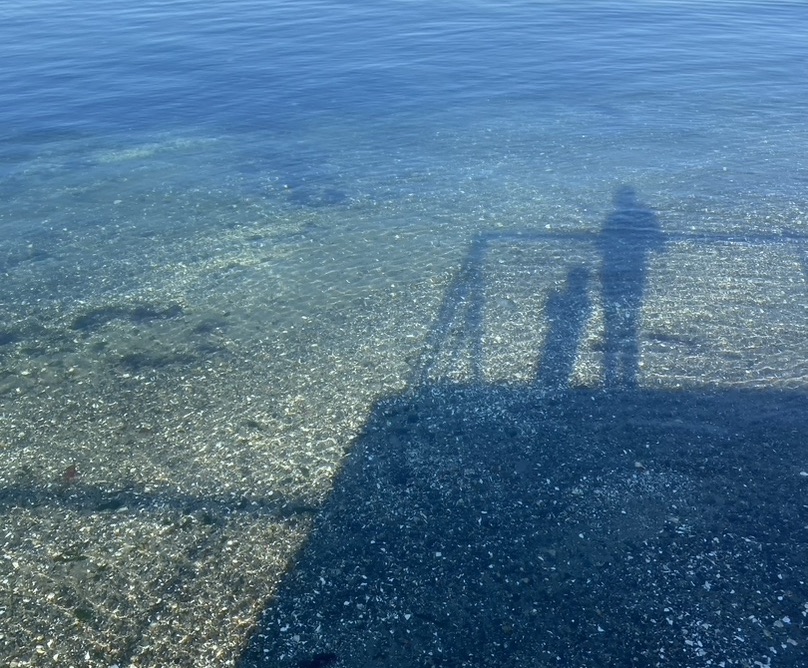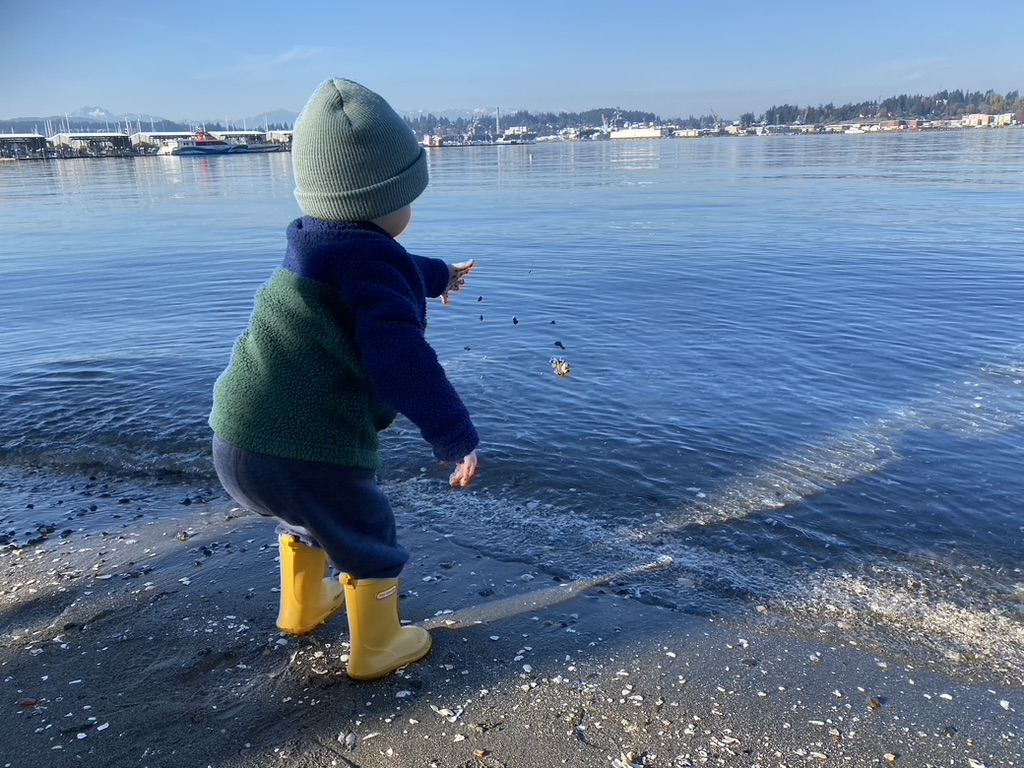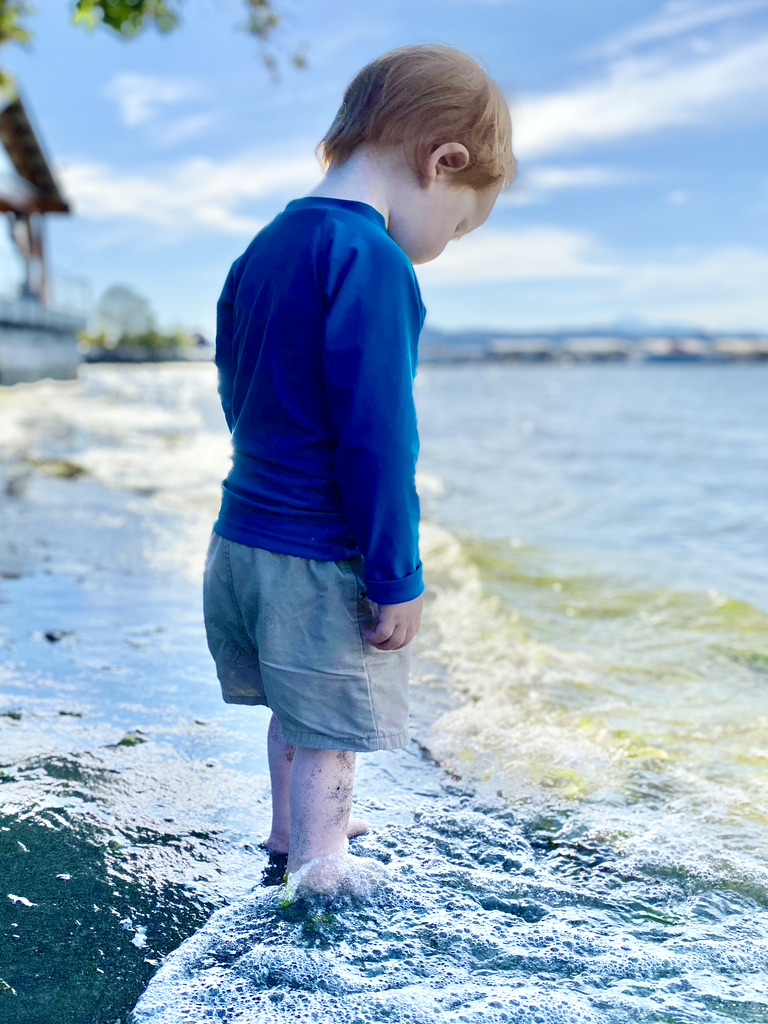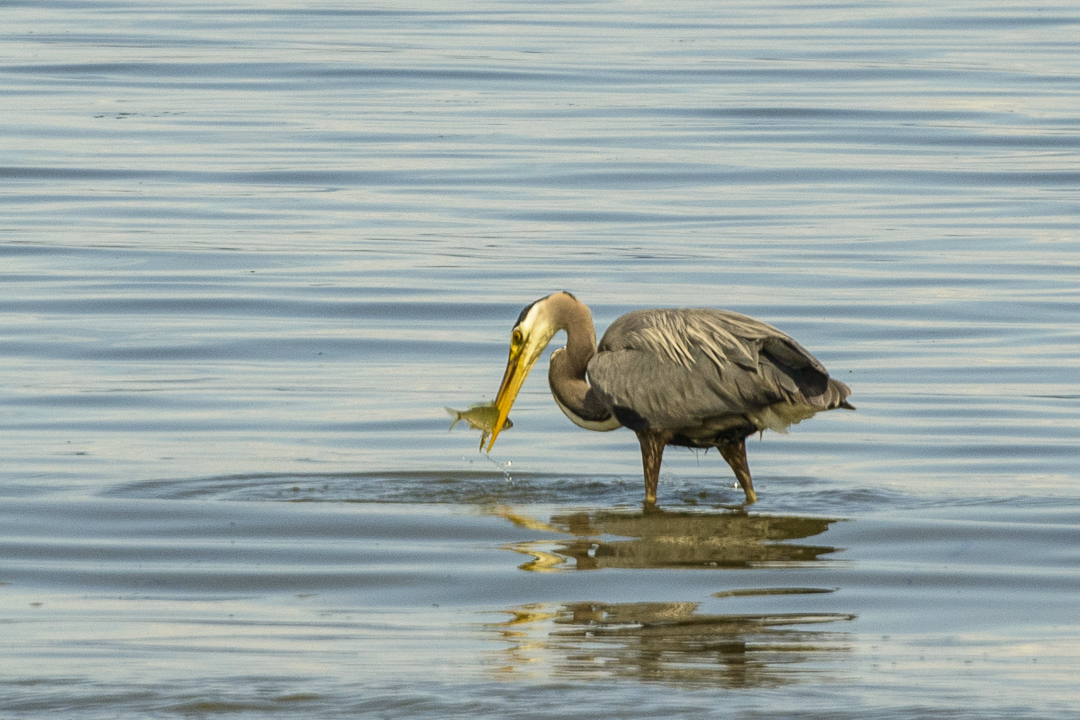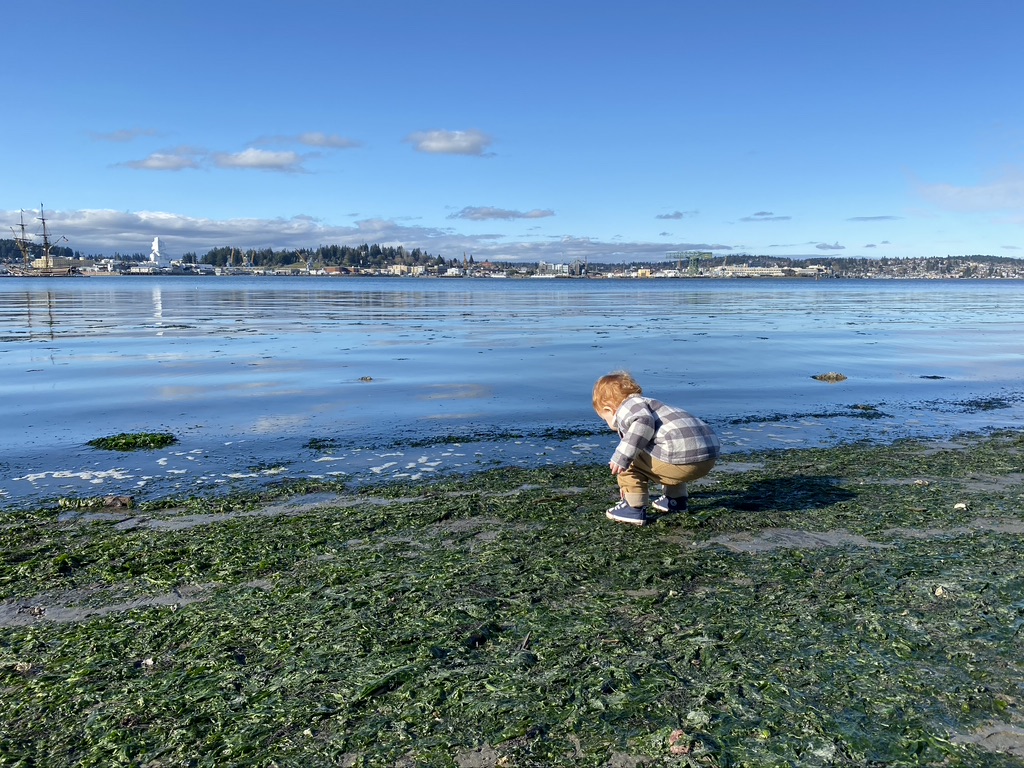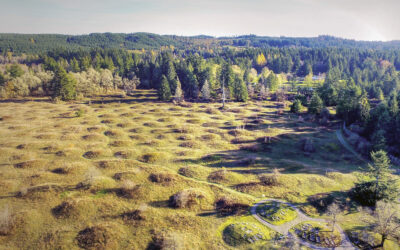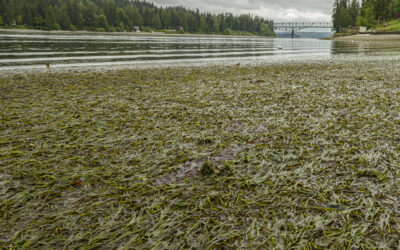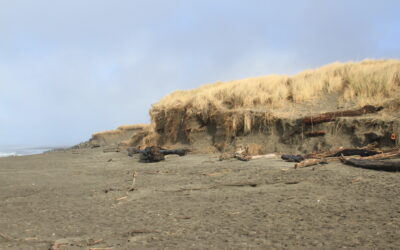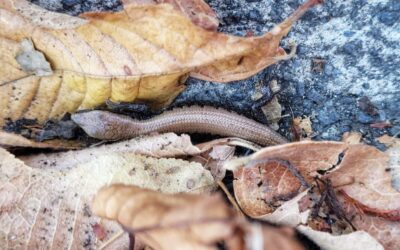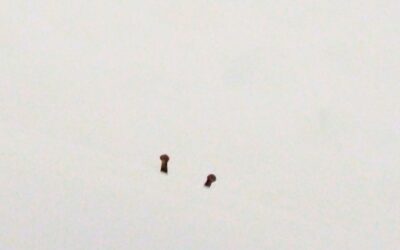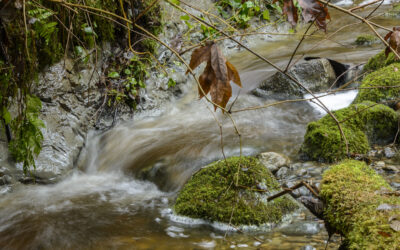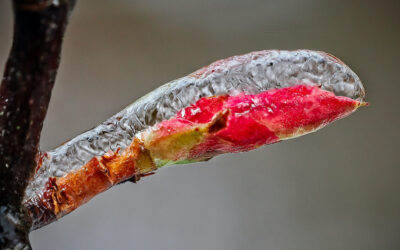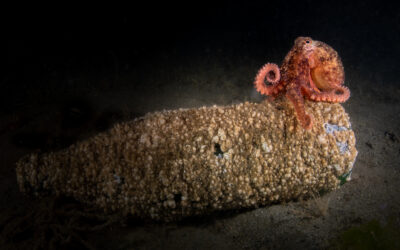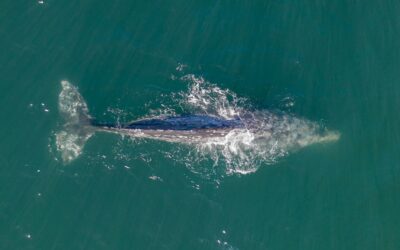TURBULENCE: GIFTS FROM THE DEEP
by Rebekah Boettcher, Spring 2023
photos by Rebekah Boettcher except as noted
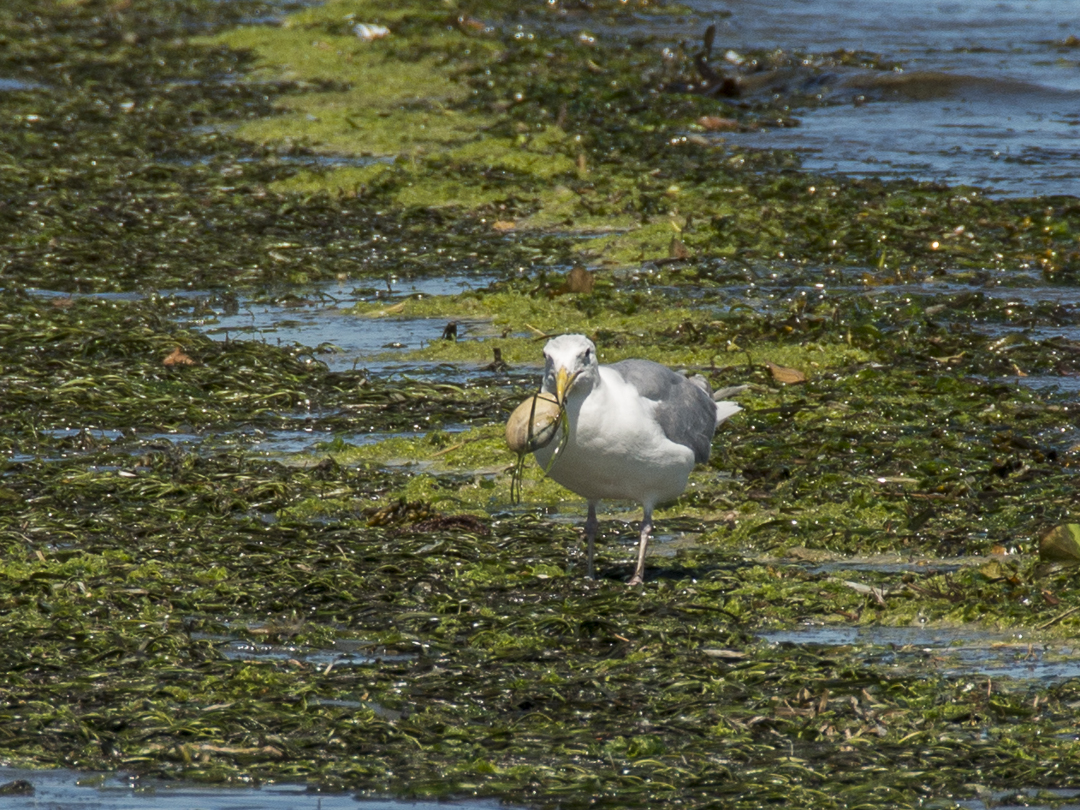
Seagull with clam. photo by John F. Williams
TURBULENCE: GIFTS FROM THE DEEP
by Rebekah Boettcher, Spring 2023
photos by Rebekah Boettcher except as noted
How did I get here? I ponder, stunned once again as we walk down to the water, a little hand squeezing mine and slowing my movement as we step, step, step down the steep hill to explore the waterfront.
“Mama! Seagull!— aaawwh aaawwhh aaaawww!” he squeals, breaking my confusion. The Olympic mountains are bright and grand today, crowning Sinclair Inlet. I smile to see them and feel glad for the warmth on my face. It has been gray for weeks. My hand bounces up and down with my son’s body as we cross the street to meet the water.
“Ferry boat, ferry boat, it’s coming in the water!”
“Yes, there it is,” I say. “Hi, ferry boat!’
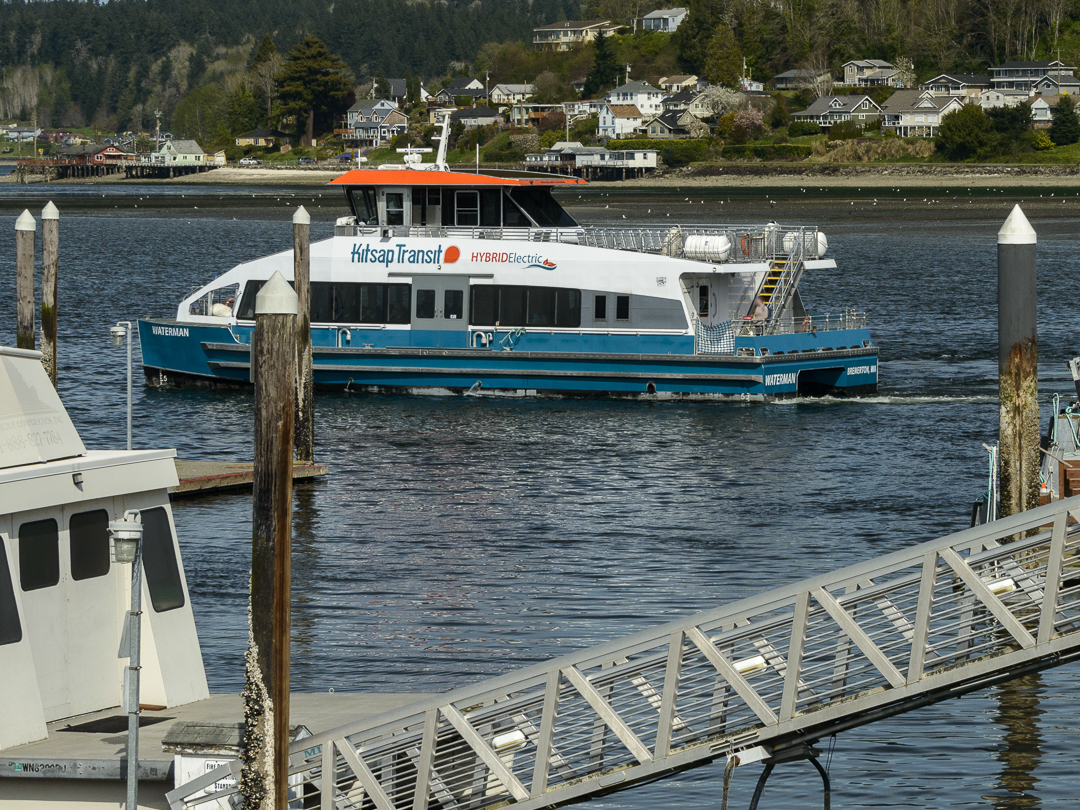
Foot ferry. photo by John F. Williams
We stop and wave to the foot ferry below us, the tide low and the ramp to the dock now a steep decline, where it had been at an incline just hours ago. The tides here are large, ranging between three and four meters, and today we can see that clearly. We pause, waving and watching the boat come and leave, and I breathe in the salt and seaweed.
“I want to go to the beach!” he says, pulling my arm. And off we go.
Wasn’t it just yesterday? I think, but no: Here is proof of the years passed standing in front of me, one, two, almost three since we lived in that other world, one my son will never know. Those years have been turbulent for our little family, upending us over and over before finally depositing us here, back in our home state, down by the water picking up rocks and looking for crabs.
The inlet is alive today. Sea lions bark across the water, their conversation echoing over to us. People enjoy the sun, feet crunching over clam shells dropped by gulls. The quiet presence of a great blue heron off to our left pulls our attention. Its thin, tall legs do not disturb the water as it takes a single, slow step forward, then stops. We pause our crab hunt to stand still like the heron, watching it as it watches the water.
As we watch and wait, my thoughts sink beneath the water. I think about the heron, gulls, sea lions, and the chain of nutrients down to the very base of the food web. Hidden in the depths is a core nutrient, nitrogen, a building block of this rich and fertile biological environment that supports the growth of tiny marine plants called phytoplankton. Phytoplankton are the base of the Salish Sea food web, providing nourishment to zooplankton (tiny marine animals) and to filter feeders such as mussels and barnacles, shrimp, jellyfish, and many other animals that are in turn consumed by other species.
 Find out how many tons of phytoplankton are needed at the base of the food web to support the growth of the Salish Sea’s top predator, the orca or killer whale in this video, “From Plankton to Orcas: Puget Sound Food Webs”
Find out how many tons of phytoplankton are needed at the base of the food web to support the growth of the Salish Sea’s top predator, the orca or killer whale in this video, “From Plankton to Orcas: Puget Sound Food Webs”
But nitrogen and other nutrients are not evenly spread throughout the waters of the Salish Sea. Tides and wind keep the water moving and mixing, bringing nitrogen up from the depths and exchanging water between Puget Sound and the Pacific Ocean. This constant turbulence raises nutrients from the deep up into the light where phytoplankton can use them.
 Water and nutrient circulation in Puget Sound in the Encyclopedia of Puget Sound
Water and nutrient circulation in Puget Sound in the Encyclopedia of Puget Sound
 Nitrogen is vital to the food web, but too much nitrogen is a problem for Puget Sound: a story map by Washington State Department of Ecology.
Nitrogen is vital to the food web, but too much nitrogen is a problem for Puget Sound: a story map by Washington State Department of Ecology.
You may have experienced turbulence on a flight, when the airline pilot announces “fasten your seatbelts, please,” and you experience that gut-dropping feeling of air currents colliding, the airplane shuddering, rising, dropping. Similar things are happening in the waters of the Salish Sea.
Water movement in the Salish Sea is driven by several factors: tidal currents, freshwater flowing in from rivers, deep inflows of saltwater coming from the ocean through the Strait of Juan de Fuca and Admiralty Inlet, and the wind. In tight and more shallow places such as the Tacoma Narrows, Admiralty Inlet, and Deception Pass, tidal currents run much faster than in deeper areas, creating turbulence. At the same time, thousands of rivers and streams pouring into the Salish Sea also bring their own nutrients and contribute to the mixing of the waters. This mixing creates estuarine habitats that support both freshwater and saltwater species, making the Salish Sea an incredibly diverse environment. Nutrients from the deep move through the food web of this estuary, making them available to still other species, including our great blue heron.
“He caught a fish!” my son yells, and my mind surfaces from the deep, too. The great blue heron has caught a fish with its beak and is shaking it back and forth. My son squeals with delight, “He caught his dinner!” We laugh as the heron takes its time shaking the fish before gulping it down its long throat. We watch the heron lift on wide wings and flap down the coastline, perhaps to find a space without giggling onlookers.
As we turn back to peeking under rocks, I think about how this moment was made possible by so much turbulence, both for the heron and for me. For the heron, turbulence in the sea brought nutrients to the surface that moved through the food web to provide its dinner. For me, the turbulence of a pandemic shook us out of a home and jobs in another state and dropped us back here, in the lap of family as we entered parenthood. Unemployment, isolation, and hardship came to the surface, but also family support, long walks in the woods, and time to be present to this new human joining our world. Gifts from the deep, I think, as I watch my son splash at the water with both hands, joyous in his experimenting.
I look down the shoreline and see the heron poised once again. I remember the question I’d been carrying on my walk down to the water, How did I get here? and I breathe deeply, realizing the sea had the answer to my question all along. The heron snaps up its next fish and I know how the gifts of this moment got here — they were stirred up from the deep and offered to us by the turbulence of life.
Rebekah Boettcher is a certified Washington State Naturalist through WSU. She is also certified as a California State Naturalist and participated in Stream Stewards, Forest Stewards, and Beach Naturalists in Kitsap County this year. Her career has included a wide variety of work with children including many outdoor experiences. Most recently, she created a nature-based after school program in California that prioritized free play outdoors and fostered a meaningful connection between children and nature. Her hobbies include creative writing, hiking, collaging, reading and community building in her neighborhood. She grew up on a ranch near Mount Rainier and now lives with her husband and son in Port Orchard, walking distance from the Salish Sea.
Table of Contents, Issue #19, Spring 2023
Underground Movement
by Amy Porter, Spring 2023 Wolf Haven mounded prairie. photo by Wolf Haven Internationalby Amy Porter, Spring 2023On Wolf Haven’s mounded prairie, there is an underground movement happening that largely goes unnoticed — bioturbation (the movement of soil) by Mazama...
A Window on Eelgrass
by Kylie Rench, Spring 2023 photos by John F. Williams by Kylie Rench, Spring 2023 photos by John F. WilliamsLow tide opens a window for the beach walker onto the vibrant world of eelgrass meadows. Submerged by salt water during most tidal cycles, these meadows are...
Poetry-19
Spring 2023 photo by Thomas NolandSpring 2023Sand and Water by Jeffrey Hummel Sand infinite amountsappearing all the sameBlowing, shifting, changingAbrasiveA handful you can’t holdSlides through your fingersGets into everythingevery part of youEvery nook, crack...
Lizard’s Locomotion
by Karin Kersteter, Spring 2023 illustrations by Karin Kersteter by Karin Kersteter, Spring 2023illustrations by Karin KersteterThere is an expression “leave the leaves,” which is designed to encourage people to let leaves lie in yards and gardens, rather than rake...
Learning from a Snail’s Pace
by Michelle Ryder, Spring 2023 Photos by Michelle Ryder except as noted Mapfire peering over the side of the bathtub from inside of it.by Michelle Ryder, Spring 2023 Photos by Michelle Ryder except as notedIn 2022 a snail came into my life. And stayed. Late last...
Movement Imagery
Spring 2023 Cowling Creek, Suquamish. photo by John F. WilliamsSpring 2023Here is a collection of photos and art work depicting various kinds of movement. You may enjoy playing the audio file below as you view the photos. The music evokes the feeling of motion through...
Plant motion
text and photos by John Bolivar, Spring 2023 Ribes sanguineum floral bud encased in ice.text and photos by John Bolivar, Spring 2023At first look it would appear that plants do not have the luxury of movement to help them avoid bad weather — like our recent bout of...
2022 Photo Challenge
by MaST Center Aquarium, Spring 2023 Jurors' Favorite - On the Bottle, Veronika Nagy. Small octopus sitting on a bottle. by MaST Center Aquarium, Spring 2023The Underwater Photography Challenge focuses on bringing divers to Redondo Beach, Washington, to highlight the...
Gray Whales
by Laura Marx, Spring 2023 Gray whale off the Oregon coast. photo by Dan Meyers on Unsplash by Laura Marx, Spring 2023Gray whales and their amazing migrations up and down the west coast of the U.S. have made an impact in my life ever since I was a child. In the 1990’s...
PLEASE HELP SUPPORT
SALISH MAGAZINE
DONATE
Salish Magazine contains no advertising and is free. Your donation is one big way you can help us inspire people with stories about things that they can see outdoors in our Salish Sea region.
We also don't advertise Salish Magazine, so please spread the word of this online resource to your friends and colleagues.
Thanks so much for your interest and your support.
We also don't advertise Salish Magazine, so please spread the word of this online resource to your friends and colleagues.
Thanks so much for your interest and your support.

